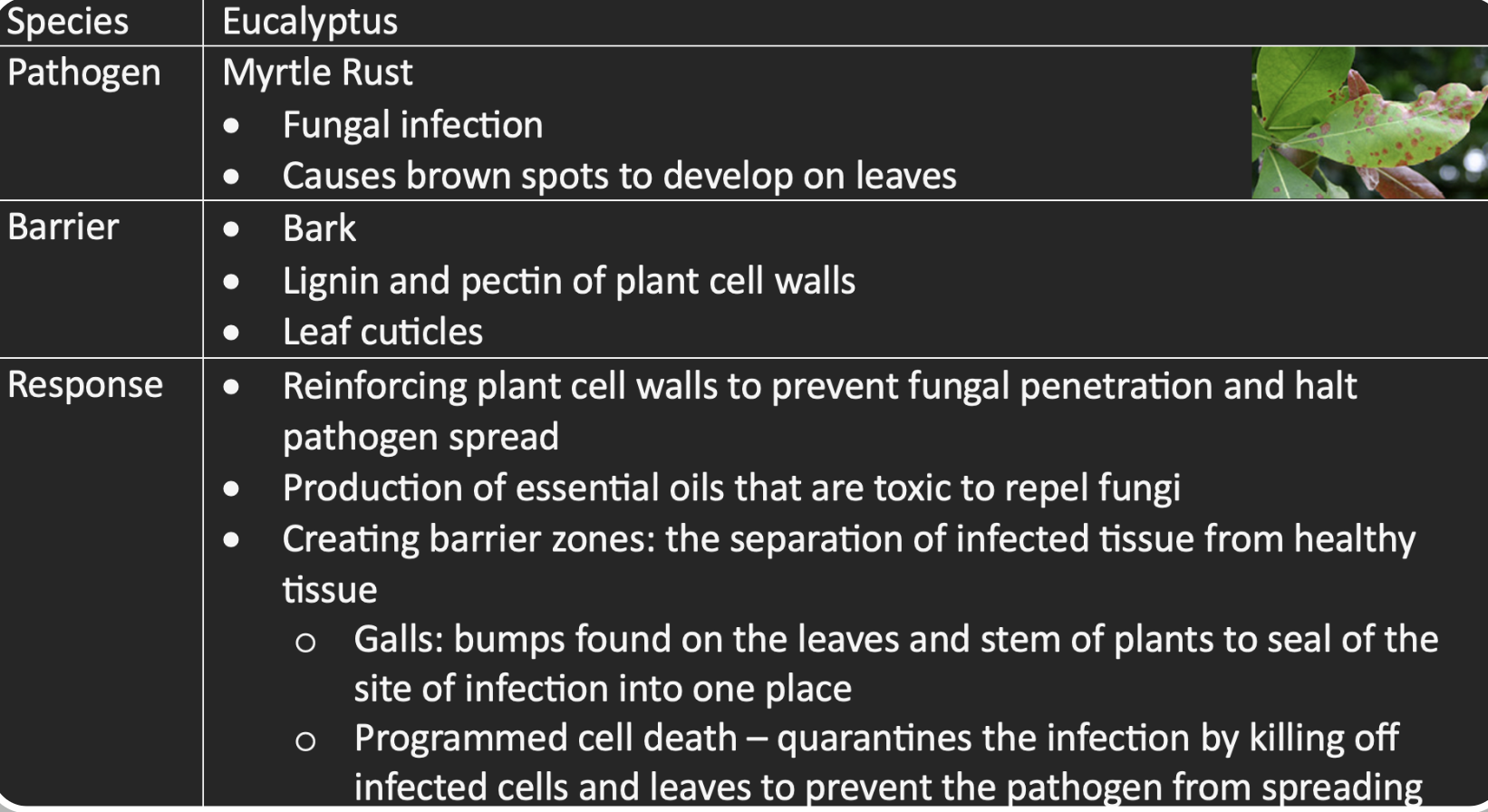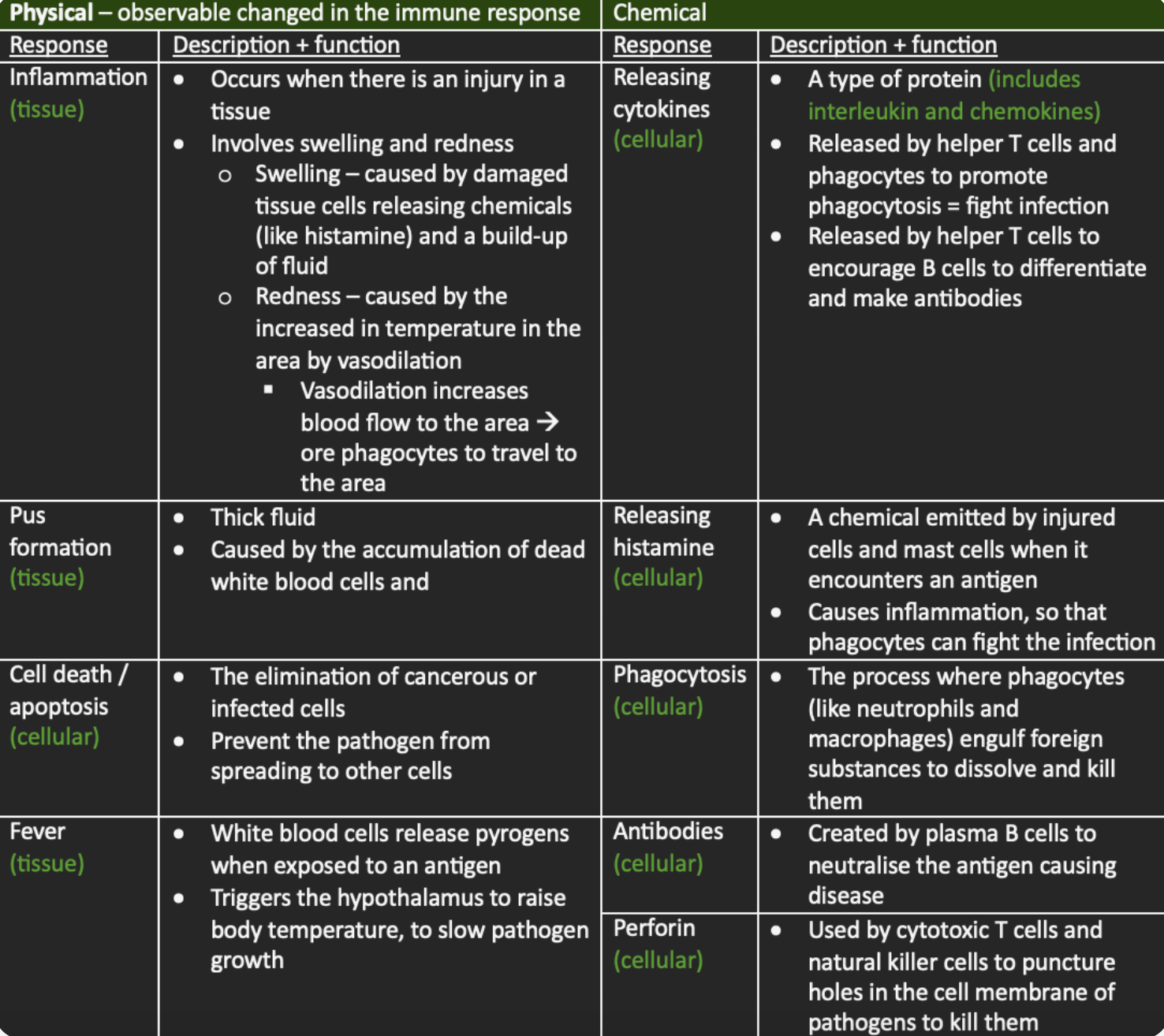Responses to pathogens
1/4
There's no tags or description
Looks like no tags are added yet.
Name | Mastery | Learn | Test | Matching | Spaced |
|---|
No study sessions yet.
5 Terms
Plant Response to Pathogen: Physical barriers
Physical barriers - Prevent the pathogen from entering
Waxy cuticles made of lignin and cutin prevent pathogens from entering plant
Cell wall - prevent pathogens from entering cell
Bark with lignin - highly impermeable
Trichomes, thorns, spines and prickles - repels insects
Vertically hanging leaves - prevents accumulation of water that allows pathogens to accumulate and reproduce
Plant Response to Pathogen: Recognition of non-self-antigens
• Each cell has microbe associated molecular patterns (MAMPs) - structure on the surface of plant cells that detects pathogens
• Allows them to trigger immune response without needing specialised immune cells
Plant Response to Pathogen: Immune responses
Basal resistance → occurs immediately after detecting a pathogen
Releases chemical irritants and toxic compounds
Tailor-made for a specific function like natural insect repellents
E.g. Stinging nettle releases histamines out of its trichomes to promote redness and itching
Makes antimicrobial and antifungal chemicals
They target the pathogen’s cell membrane or inhibit growth
Plant fortifies itself to become impenetrable
Guard cell closes the stomata → prevent pathogens from entering and exiting to be transmitted to other plants
Callose deposition → a polysaccharide that fills the gap between cell walls of plants to limit disease spread
Gene for Gene Resistance - a relationship between the plant and the pathogen where, the plant must have a resistance gene that matches a pathogen’s avirulence gene to be immune
Some mutations in the plants DNA allows it to have genes that make the plant resistant to specific pathogens
Gene allows plant to produce the right proteins to kill the pathogen
Plant cells have receptors that recognise the pathogen to trigger a specific defence response
∴ Need genetic variety = the likelihood that one individual has this gene increases
Some viruses have an avirulence gene against a specific plant = makes it not pathogenic against the plant
Hypersensitive response → occurs when basal resistance fails, or it lacks the resistant gene
When apoptosis - programmed cell death occurs = it restricts the pathogen to the infected site by killing the cells around it, and saving the rest of the plant
System acquired resistance → Activated in a plant after exposed to a pathogen
Through a series of chemical reaction, the system enables the plant to generate a faster attack after subsequent exposure to the pathogen (similar to memory cells in plants)
Eucalyptus Trees’ response to myrtle rust

Animal Responses to Pathogens
